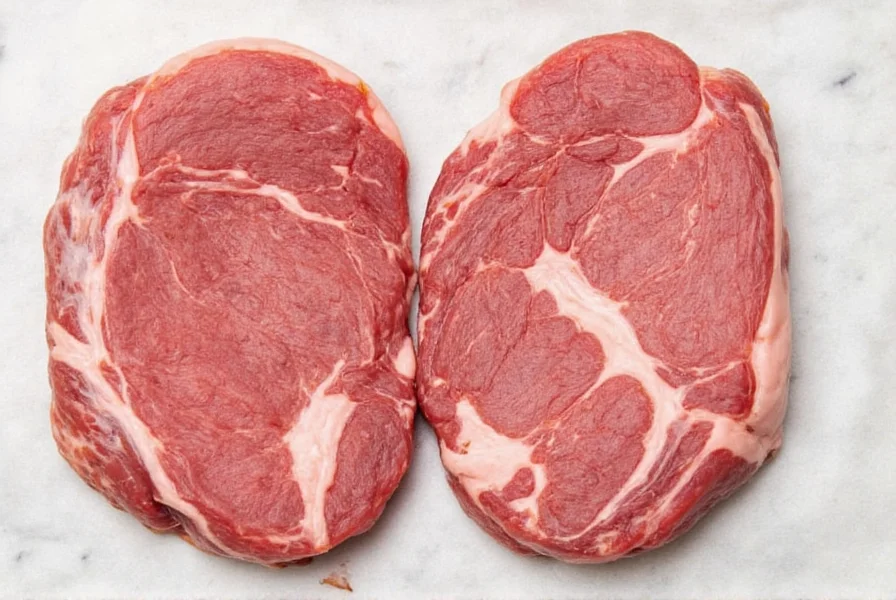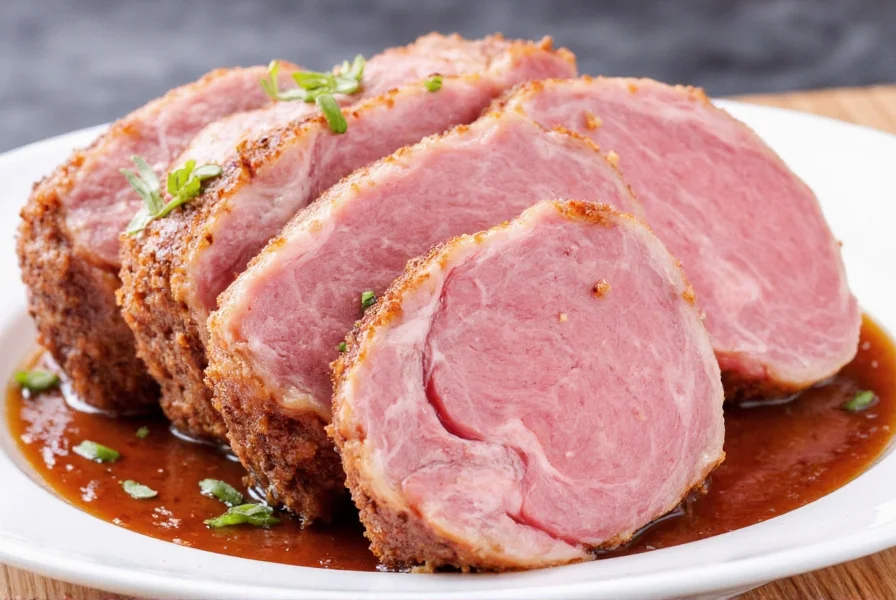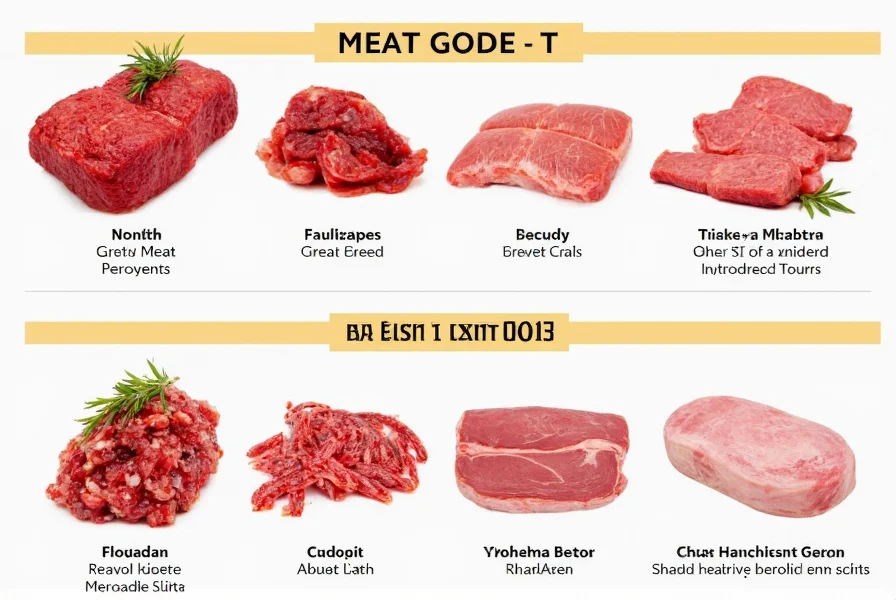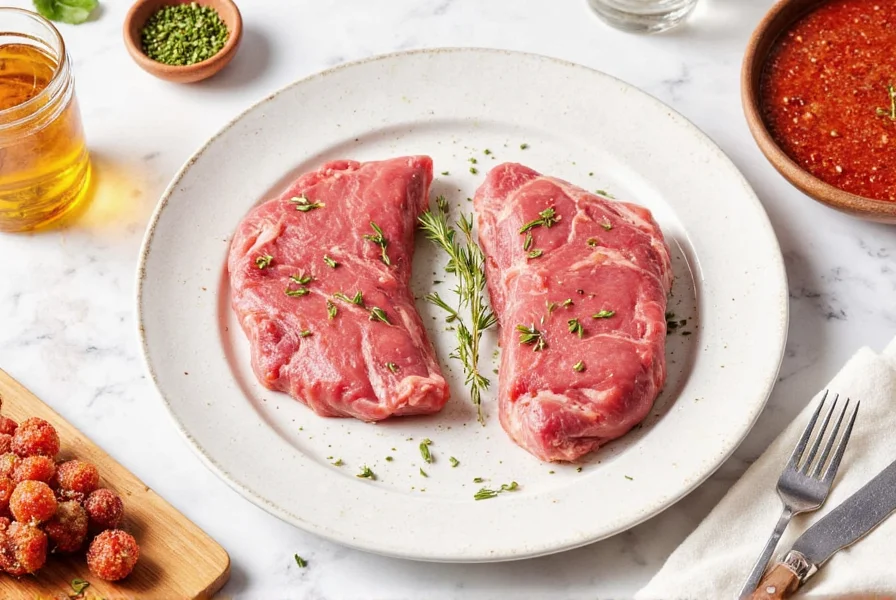Table of Contents
Introduction
Pairing the right spices with the correct meat type is essential for creating flavorful, restaurant-quality dishes at home. Whether you're grilling steak, roasting chicken, or braising lamb, understanding how spices interact with different meats can transform your cooking. In this guide, we'll explore expert spice pairings, cooking techniques, and practical tips for selecting quality meat—without any product promotions—so you can confidently elevate your meals.

Meat Types and Flavor Profiles
Each meat has unique characteristics that determine how it responds to spices and cooking methods. Here's a detailed breakdown:
| Meat Type | Flavor Profile | Texture | Best Cooking Method |
|---|---|---|---|
| Beef | Rich, savory, slightly gamey | Tougher when undercooked, tender when cooked properly | Grilling, roasting, braising |
| Pork | Mild, slightly sweet, fatty | Tender when cooked correctly | Roasting, frying, slow-cooking |
| Chicken | Mild, versatile, slightly nutty | Tender and juicy when cooked right | Grilling, baking, sautéing |
| Lamb | Gamey, rich, slightly tangy | Firm and tender when cooked properly | Grilling, roasting, stewing |
| Veal | Mild, delicate, slightly sweet | Tender and soft | Roasting, braising, pan-searing |
| Wild Game (e.g., venison) | Strong, earthy, gamey | Firmer, leaner | Braising, roasting, smoking |



Optimal Spice Pairings for Each Meat
Spice selection should complement the meat's natural flavors while enhancing its texture. Here's how to match them:
- Beef: Cumin adds earthy warmth to grilled steaks; rosemary and garlic enhance roasted cuts; paprika brings smoky depth to chili. The richness of beef stands up to bold, aromatic spices.
- Pork: Cinnamon and cloves complement pork's sweetness in braised dishes; sage and thyme work well with roasted pork chops; ginger and coriander add Asian-inspired flair to stir-fries.
- Chicken: Lemon zest and oregano brighten grilled chicken; turmeric and cumin create a fragrant curry base; garlic and thyme are classic for roasted whole chickens. Delicate chicken benefits from fresh, citrusy herbs.
- Lamb: Mint and rosemary cut through lamb's richness; sumac adds tangy brightness; cumin and coriander create Middle Eastern-inspired flavors. Stronger spices balance lamb's gaminess.
- Veal: Tarragon and thyme highlight veal's delicacy; lemon and white wine create bright, acidic notes; garlic and shallots add subtle depth without overpowering.
- Wild Game: Juniper berries and black pepper cut through gamey flavors; smoked paprika adds complexity; rosemary and garlic create robust, woodsy profiles. Earthy spices complement wild game's intensity.
Pro tip: Always taste spices before adding them to meat. Start with small quantities and adjust based on the meat's fat content—fattier meats can handle stronger spices, while lean meats need lighter, brighter flavors.
Cooking Techniques That Enhance Flavor
How you cook meat affects how spices penetrate and develop flavor. Here's how to optimize techniques:
- Grilling: For beef, lamb, and pork, use dry rubs with coarse salt and spices to create a flavorful crust. Avoid over-marinating lean cuts like chicken breasts.
- Roasting: For whole chickens or beef roasts, combine herbs with fat (like olive oil or butter) to help spices adhere and distribute evenly. Add aromatics like onions and garlic to the cavity for deeper flavor.
- Braising: For tougher cuts like beef chuck or lamb shanks, use whole spices (cinnamon sticks, star anise) that infuse slowly. Deglaze the pan with wine or broth to incorporate caramelized bits.
- Sautéing: For quick-cooking meats like chicken or veal, add spices during the last 2-3 minutes of cooking to prevent burning. Use high-heat oils like avocado oil for better spice activation.
- Smoking: For wild game, use wood chips that complement the meat's intensity (hickory for venison, applewood for rabbit). Apply spices after smoking to preserve their freshness.
How to Choose Quality Meat
Selecting the right meat is foundational to successful spice pairing. Follow these guidelines:
- Beef: Look for bright red color with fine marbling (white fat streaks). Avoid grayish or brown edges. For steaks, choose cuts like ribeye or sirloin with even fat distribution.
- Pork: Choose pinkish-red meat with creamy white fat. Avoid pale or grayish hues. For chops, ensure even thickness for consistent cooking.
- Chicken: Check for firm texture and no strong odor. Skin should be smooth and unblemished. For whole chickens, ensure the breast is plump and the legs move freely.
- Lamb: Look for bright red meat with fine marbling. Fat should be white or creamy, not yellow. Avoid strong gamey smells—fresh lamb has a mild, clean aroma.
- Veal: Choose pale pink meat with minimal fat. Avoid any grayish tones. Veal should feel firm but not tough when pressed.
- Wild Game: Check for deep red color with minimal fat. Venison should have a clean, earthy smell. Avoid any metallic or sour odors that indicate spoilage.
Frequently Asked Questions
Why do some spices work better with certain meats than others?
Spices interact with meat based on flavor compounds and fat content. Fatty meats like pork can handle stronger spices (cinnamon, cloves) because fat carries flavor, while lean meats like chicken benefit from brighter, acidic spices (lemon zest, vinegar) that cut through dryness. Understanding these interactions ensures balanced seasoning.
Can I use the same spice blend for different cooking methods?
Yes, but adjustments are needed. Dry rubs work best for grilling or roasting, while wet marinades (with oil or acid) are better for sautéing. For slow-cooked dishes, whole spices (like cinnamon sticks) infuse better than ground spices, which can become bitter with prolonged heat.
How much spice should I use per pound of meat?
Start with 1-2 teaspoons of dried spices per pound of meat. For fresh herbs, use 1-2 tablespoons. Always taste before adding more—over-seasoning is harder to fix than under-seasoning. Remember that salt should be added separately to control overall saltiness.
What's the best way to store spices for maximum flavor?
Store spices in airtight containers away from heat and light. Ground spices last 6-12 months, while whole spices last 2-3 years. Replace spices when they lose vibrancy (no aroma when crushed). Never store near stovetops or windows where temperature fluctuations occur.
How do I fix over-spiced meat?
Add acidity (lemon juice, vinegar) or sweetness (honey, brown sugar) to balance strong spices. For salty over-seasoning, add dairy (yogurt, cream) or starchy ingredients (potatoes, rice) to absorb excess salt. Always taste and adjust incrementally.
Conclusion
Mastering spice pairing with different meat types transforms ordinary meals into extraordinary dishes. By understanding each meat's natural flavor profile, selecting complementary spices, and applying the right cooking techniques, you'll consistently create restaurant-quality results at home. Remember: the best spice combinations balance the meat's characteristics—not overpower them. Start with small adjustments, trust your palate, and soon you'll develop an intuitive sense for perfect flavor harmony.










 浙公网安备
33010002000092号
浙公网安备
33010002000092号 浙B2-20120091-4
浙B2-20120091-4